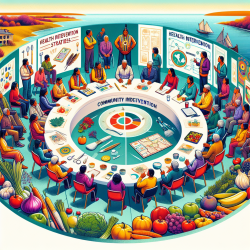Enhancing Kidney Disease Education for Latinx Patients: Insights and Recommendations
In the realm of healthcare, effective communication and education are paramount, especially when dealing with chronic conditions like kidney disease. A recent study titled "Perspectives on Kidney Disease Education and Recommendations for Improvement Among Latinx Patients Receiving Emergency-Only Hemodialysis" sheds light on the gaps and potential improvements in educating Latinx patients about kidney disease. This blog aims to distill the key findings of the study and provide actionable insights for practitioners looking to enhance their educational strategies.
Understanding the Educational Gaps
The study involved qualitative interviews with 15 Latinx patients who received emergency-only hemodialysis. The findings revealed several critical gaps in the education provided to these patients:
- Lack of Awareness: Many patients were unaware of their kidney disease until they required dialysis, highlighting a significant gap in early education and prevention efforts.
- Incomplete and Poor-Quality Education: Education often occurred during acute illness, leading to fragmented learning and limited understanding of treatment options.
- Cultural and Language Barriers: Education was frequently not delivered in the patients' preferred language, and cultural nuances were often overlooked, affecting comprehension and engagement.
Recommendations for Improvement
The participants provided several recommendations to improve kidney disease education and outreach within Latinx communities:
- Use Culturally Concordant Communication: Deliver education in the patients' native language and incorporate cultural elements into the messaging to enhance understanding and relevance.
- Incorporate Visual Aids: Utilize visual aids to explain complex medical procedures and concepts, making them more accessible and understandable.
- Involve Family and Support Systems: Educate not only the patients but also their families, as this can alleviate anxiety and promote better adherence to treatment plans.
- Leverage Community Resources: Conduct educational sessions in community settings like churches and schools, and use social media to reach a broader audience.
Implications for Practitioners
For practitioners, these insights underscore the importance of culturally sensitive education strategies. By implementing these recommendations, healthcare providers can improve patient outcomes and foster a more inclusive healthcare environment. Key actions include:
- Investing in interpretation services and ensuring all educational materials are available in Spanish.
- Training healthcare staff to deliver culturally tailored education and engage with patients' support systems.
- Utilizing community health workers to bridge the gap between healthcare providers and the Latinx community.
In conclusion, enhancing kidney disease education for Latinx patients requires a multifaceted approach that addresses language barriers, cultural nuances, and community involvement. By adopting these strategies, practitioners can play a pivotal role in improving health literacy and outcomes for this underserved population.
To read the original research paper, please follow this link: Perspectives on Kidney Disease Education and Recommendations for Improvement Among Latinx Patients Receiving Emergency-Only Hemodialysis.










